The 20 Best Electronic Releases of 2019
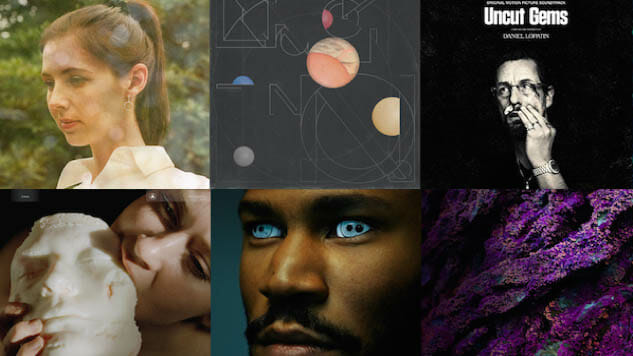
We’ve already shared our picks for the best albums of 2019, as well as many genre-specific lists, including country and pop. But one area we haven’t yet covered in list format? Electronic music. It was a riveting year for the genre, featuring stunning works from the likes of Jenny Hval and KAYTRANADA, as well as more off-kilter favorites from 100 gecs and Carla Dal Forno. Here are our 20 favorite electronic releases from the last 12 months.
Listen to our Best Electronic Releases of 2019 playlist on Spotify right here.
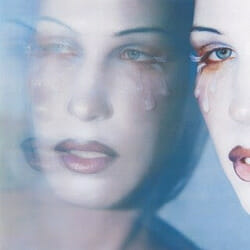 20. Eartheater: Trinity
20. Eartheater: Trinity
Raves have long been the safe space for eccentrics, and with Trinity, Eartheater pays homage to the dance floor weirdos of the past. Alexandra Drewchin’s most decidedly dance release, Trinity is distinctly sexual, viewing female eroticism through a watery lens. She dips her toes into her trademark transgressive smut on “Supersoaker” with lyrics that wouldn’t be out of place on a Cardi B track: “Better grow gills, bring a snorkel / chug a whole gallon to reload.” To compensate, the oceanic inflections make Trinity siren-like and alluring, touting its own indulgence in plain sight. She really has the subtlety of a gunshot—on “Pearl Diver,” the tape’s most hip-hop cut, she states she needs a “cunning linguist” to help her find her pearl. It isn’t even the first time she’s deployed that exact play-on-words on the mixtape. Eartheater has made a career out of challenging our notions of taste, and the Libertine mermaid Drewchin channels on Trinity serves to further expand her core thesis. —Austin Jones
 19. Andy Stott: It Should Be Us
19. Andy Stott: It Should Be Us
Compared to the rest of Andy Stott’s 15-year career, the palette used to paint It Should Be Us is distinctly matte. It might not be as intense as Faith In Strangers, and it certainly isn’t as sumptuous as Luxury Problems, but It Should Be Us provides a grisly ride of crushing bass and off-beat percussion. “Promises” is hard to follow thanks to its shifting tectonic plates of rhythms, making a deranged dance track that’s entirely impossible to move along to. “Versi” is wholly unromantic, in contrast to the current glitzy world of modern house and techno. It Should Be Us would have benefitted from more moments of beauty, or at least some respite from the tinny oil drum sounds of metal rubbing against metal, but It Should Be Us relishes in its own disobedience and manages to be a fine addition to Stott’s long catalogue. —Austin Jones
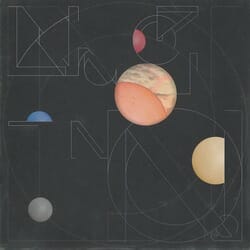 18. Steve Hauschildt: Nonlin
18. Steve Hauschildt: Nonlin
Steve Hauschildt, formerly of Emeralds, had a busy decade. Starting in 2010, Emeralds released their critically acclaimed Does It Look Like I’m Here? followed by another album in 2011. After their disbanding, Hauschildt churned out an average of an album a year, ending the decade with his freeform Nonlin, a work of avant-garde ambience that’s as accessible as it is demanding of your attention. Never intrusive, the pieces crawl along the floor then take flight, providing a light challenge for newer listeners of Hauschildt’s extensive discography. The skittering, glitchy synth on “The Spring in Chartreuse” is calmed with a somnambulant toy piano, making sense of planetary chaos like an infant’s mobile might. “Subtractive Skies” ups the tempo but never feels too fast—it possesses a certain anti-gravity that makes it float right off the surface, frictionless and esoteric. Nonlin may not be Hauschildt’s best solo work, but it feels like a refinement on his signature soothing style and a perfect entry in anyone’s study-and-relax playlist. —Austin Jones
 17. Carla dal Forno: Look Up Sharp
17. Carla dal Forno: Look Up Sharp
Berlin-via-Melbourne queen of mood Carla dal Forno returned to 2019 with her fair share of crosses to bear and withering gazes. Ever the fan of pop structure (look no further than her cover of “Summertime Sadness” from her 2018 covers tape), dal Forno wears her taste on her sleeve on Look Up Sharp. “So Much Better,” the album’s standout track, is reminiscent of Peggy Lee’s “Why Don’t You Do Right,” in which dal Forno declares herself “in such a bad mood” and absolutely decimates an ex-lover with apocalyptic pomp. Continuing with a turbulent attitude, “I’m Conscious” leads with post-punk drums and threatens “we both see how this will end.” The bass on “Took a Long Time” undulates with a ’50s lounge groove at half-speed, clearing the fog and taking us into the daylight. If Chromatics’ Kill for Love is synth-pop’s answer to filmic impressionism, Look up Sharp is post-punk’s, thunderous and ready for revenge. —Austin Jones
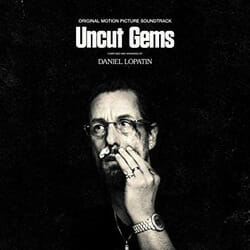 16. Daniel Lopatin: Uncut Gems Soundtrack
16. Daniel Lopatin: Uncut Gems Soundtrack
Daniel Lopatin (aka Oneohtrix Point Never) scored his first major film back in 2017 on the Safdie Brothers’ Good Time. The soundtrack, proggy and nervous, stood on its own among Lopatin’s other experimental works, a case for scores-as-listenable-music. His work on Uncut Gems, also by the Safdie Brothers, portrays him as a scorer with multiple tricks up his sleeves. In contrast to his work on Good Time, the soundtrack for Uncut Gems dives even deeper into the cosmic, extensively using a Moog One synthesizer and drawing on early avant-garde New Age composers like Suzanne Ciani and Vangelis. The score also eschews cliches endemic to film scores—on “Fuck You Howard,” a track that plays during a moment of righteous rage from Julia Fox’s character, Lopatin wanted to dive back into that prog noise from Good Time, crafting a triumphant and choral track in honor of her strength, a shift in psyche from Sandler’s Howard Rattner. Lopatin’s work here portrays him as a composer hyper-concerned with the issues presented within a film’s text, and it’s always honest, even if it’s for a colonoscopy scene. —Austin Jones
 15. YEULE: Serotonin II
15. YEULE: Serotonin II
Yeule, a project by London-based Singaporean producer Nat Cmiel, is all about online dreams. Cmiel is as cheeky as she is nerdy, naming her project after a character from Final Fantasy XIII-2 and sprinkling in anime references across her first full-length, like the famous Cowboy Bebop send-off on “See You Space Cowboy.” Serotonin II might as well confirm that androids do dream—tracks like “Pixel Affection” twitch with lovesickness and glitchy production, seeing Cmiel embody cyber-sweetness with her lilting vocals. The sound design is top notch, especially within the traditionally lo-fi genre of dream pop; every moving part on “Pretty Bones” (and there are many) sound sharp and identifiable, even the dial-tone ringing underneath Cmiel’s malfunctioning voice. Cmiel provides a sufficiently sophisticated take on the tried-and-true dream pop genre, gesturing towards a rosy future for introverts and the internet. —Austin Jones
 14. KAYTRANADA: BUBBA
14. KAYTRANADA: BUBBA
When Montreal-via-Haiti producer KAYTRANADA came out as gay shortly before he released his debut studio album 99.9% in 2016, it was kind of a big deal. Openly queer people, especially black men, remain relatively uncommon in hip-hop and R&B despite their prevalence in pop music and general life, so Kay coming out as a member of the LGBTQ+ community—just as iLoveMakonnen, Taylor Bennett, Steve Lacy and Frank Ocean all have—may well have inspired listeners intimidated by the longtime exclusionary tendencies of these genres to follow in his footsteps. 99.9%, though, wasn’t an overtly queer musical collection. It didn’t need to be: Kay’s blend of “straight hip-hop shit” (his words), the Haitian music his family played in his childhood home, muffled but chest-puffed bass and synths that purred with lust caught the attention of pretty much anyone listening. BUBBA, Kay’s long-awaited 99.9% successor, likewise doesn’t scan as an intentionally queer collection, but it’s hard not to read some of its traits as directly stemming from just how much happens in the first three years after someone comes out. Here’s how the aftermath often goes if you’re lovingly accepted rather than callously rejected: You shed a massive chunk of your internalized homophobia or transphobia; you begin speaking about your love interests or gender identity as though they’re no different from the majority; your angriest, most despondent, distant selves disintegrate as you stop wearing the mask that’s long squashed your happiness. You just feel lighter. That’s what BUBBA feels like. —Max Freedman
 13. Pharmakon: Devour
13. Pharmakon: Devour
Margaret Chardiet has made a career out of exploring the body’s scariest secrets. Devour, her fourth release as Pharmakon on Sacred Bones, somehow reads as her most optimistic. In contrast to the ill strife of Bestial Burden or the astral dissociation of Contact, Devour seems to present a solution for Chardiet’s career-long quandary of how not to feel trapped inside your own body: eat yourself. Largely a metaphor for the self-destruction humans engage in every day, the album’s five tracks dive headlong into our most molecular forms of coping. Every seven to 10 years, every cell in your body has died and been replaced with a new one; it’s a classic thought experiment that reveals how we view identity, and Chardiet, to a degree, seems to find comfort in apoptosis. Opening track “Homeostasis” directly references the error in comfortable stagnancy, punctuated by watery, robotic melismas that challenge the track’s natural, static looping state. In maybe Chardiet’s only track about a body supporting the person inside it, “Self-Regulating System” refrains with “maybe self-destruction / the only viable / self-regulating system.” Devour, somehow, finds hope in death—maybe the next “us” will be more equipped for the gradually darkening world. —Austin Jones
 12. juneunit: juneunit
12. juneunit: juneunit
Juneunit is a relative unknown who wrote her debut full-length during a transitional period from San Francisco to New England. This shines throughout the album; s/t is off-center, but glimmers with an uncharacteristic beauty. Taking inspiration from IDM classics like Boards of Canada and Seefeel, s/t finds marvels around every corner, gradually blooming into a garden of synth, breakbeats, and life. The album manages to balance cavernous sounds, such as the deep and distant keyboards on “xyo,” with warm, tight tones—it’s adventurous and ready to stretch its limbs, providing a trip down into the world’s deepest crystal caverns on “hsn7” followed by soaring to high heavens on the xylophonic “wlkhm.” Unlike many debuts, s/t seems like it yearns for growth, as willing to take refuge at the fireside as it is to dip its feet in wild rapids. —Austin Jones
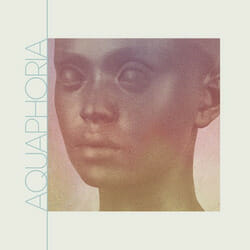 11. Kelela: Aquaphoria Mix
11. Kelela: Aquaphoria Mix
Unfortunately, we weren’t blessed with a full-length release from Warp Records darling Kelela in 2019. Perhaps taking mercy on our poor souls, Kelela in collaboration with the label released a near-hour long mix for “WXAXRXP,” a special three-day long broadcast via NTS Radio in celebration of Warp Records’ 30th anniversary. The mix is entirely composed of Kelela layering her own vocals over existing ambient works by Susumu Yokata, Oneohtrix Point Never, Visible Cloaks, Aphex Twin and more. The title of the mix, Aquaphoria, might as well be a flex on Kelela’s exceptional ear for flow and comity: broken down, aquaphoria might literally mean “the state of being water.” Kelela manages to occupy every state of matter H2O manifests as. On her interpretation of “Altibzz” by Autechre, she sounds as glacial and distant as snow in a cloud. The track used on the mix that sticks out the most is also the mix’s most mesmerizing moment. Atop a live recording of a Jacob Pastorius solo show, which features jazz-folk legend Joni Mitchell, Kelela might as well exist as dew on a window, moving at inscrutable speeds accompanying Pastorius’s fretless bass. In the background, the audience whoops and hollers in applause, a strangely meditative addition to the already genre-bending mix. Aquaphoria defines Kelela as not only an exceptional and forward-thinking R&B artist but as a producer aficionado, and we’re eager to see what she’s up to in 2020. —Austin Jones
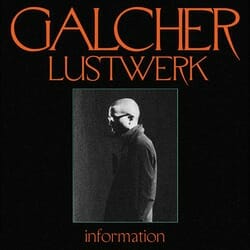 10. Galcher Lustwerk: Information
10. Galcher Lustwerk: Information
What does nightlife sound like? Hope, exhaustion, romance, secrets? Galcher Lustwerk’s Information might be the closest we get to a solid answer in obscured distant deep house soundscapes. World-weary, Lustwerk provides a compilation of electronic anthems that are as dance floor ready as they are thoughtful and pensive. While none capture the poetic lightning of his now legendary “Parlay,” Information’s muted vocal work is perhaps more rare in the rapidly commercializing realm of house. The jazz-infused “Cig Angel” is near vampiric, flickering like a lamppost on a late night walk home. “Been a Long Night” sleepwalks through dark bass, leading into the album’s final track “Speed,” which highlights Lustwerk’s whispery, talk-rap vocals. It may have been a long one, but night is something eternal, followed infinitesimally by sequential nights as full of possibility as Information. —Austin Jones
 9. Boy Harsher: Careful
9. Boy Harsher: Careful
Back in 2013, former Savannah group Boy Harsher breathed new life into minimal synth. Now based out of Massachusetts, their signature sound has evolved through their use of world-building and Jae Matthews’ shotgun-smoke voice. Careful, their first of two full-length releases in 2019, is a voyeur’s paradise—the duo write music about pain, destruction, and fear with raw, hedonist sensuality. “Face the Fire” is among the album’s sweatiest with a near religious dedication to masochistic self-flagellation. “LA” contains some percussive gongs that wouldn’t be out of place on a Mortal Kombat song, which later melt into a twisted lovesickness. On Careful, Boy Harsher solidifies itself as one of the best darkwave acts of today, paying homage in equal parts to Nurse With Wound and Kraftwerk. With their use of machine arpeggios, they make music that is distinctly bodily, portraying our mortal coils as viperous; Boy Harsher is as ready to love as they are to bite. —Austin Jones
 8. 100 gecs: 1000 gecs
8. 100 gecs: 1000 gecs
The cross-continental duo of 100 gecs, comprised of Laura Les and Dylan Brady, are pretty astute disciples of the sounds that they love, and seemingly fervent supporters of the idea of obliterating the last boundaries of taste that have lingered in the last decade or so. The gecs’ homage, debut album 1000 gecs, turns an entire digital library of Very Online Music into a collision course to demolish and reconstruct, resulting in a dizzying, hedonic 23 minutes. —Joshua Bote
 7. Peggy Gou: Moment EP
7. Peggy Gou: Moment EP
House music is and always has been about the feeling: queer love, the glitz of the catwalk, the radical desire to dance in a crumbling city. What if these thoughts, these strains of the heart, could be bottled and consumed as a renewable resource of euphoria? Peggy Gou comes as close to supplying dopamine en masse as humanly possible. Her recipe is simple, really—start with a hip-popping piano, layer some bright hi-hats, don’t forget the Korean spoken-word, and top it off with some improvisation to taste. The excellent music video for “Starry Night” begins with the song’s title, in Korean, then in quotations, its subtitle: “or, how to feel alive.” The success of a Peggy Gou track comes from its unabashed dedication to the feeling, the emotion, but where Carly Rae’s emotion differs from Peggy Gou’s is in the physical realm: emotion equals dance. Rarely has a command to dance sounded so intimidating and true as it does on “Starry Night”—you’re right, Peggy, I should be dancing. The song, peppered with nonsense proclamations like “world, freedom, listen, now, us” that are perfectly coherent when you’re screaming them, is like a piece of instructional art on how to let your hair down, or on where to find youth in the future. “Han Pan,” too, scintillates like a yard of sequins, glistening and refracting light with its nod-inducing deep beat. “Moment EP” is as polished as it is kind, offering a hand to a better world, cool waters, and the eternal possibility of an endless summer. —Austin Jones
 6. Coucou Chloe: NAUGHTY DOG EP
6. Coucou Chloe: NAUGHTY DOG EP
The most admirable aspect of Coucou Chloe’s Naughty Dog is its dedication to inhuman sound. Her husky, hieroglyphic voice is hidden beneath drunken, slurred haze, an arcane invitation to summon another drink before the night’s end. The London-based producer is as well-known for her effortless cool-girl style as she is for her post-club sound—she has more in common with the devil-may-care vibe of Rihanna, who notably featured the producer’s work in her work in the New York Fenty x Puma runway show back in 2017. Eldritch banger “GECKO” slithers, snares, and barks (quite literally—she is the naughty dog, after all) its way through a spell book, and there at the end is a necromancer with a grill ready to kill. One of the EP’s only moments of lyrical clarity is on “JUICY,” her duet with NUXXE labelmate Shygirl. “Baby you were right / I’m just fucked up,” she admits, adding “maybe you were right / I don’t give a fuck.” She’s evil, she’s inebriated, and she doesn’t care—it’s a bold reimagining of a trap flex. Shygirl’s verse matches her braggadocio, only with renewed humanity. The EP’s other decidedly human moment comes from the EP’s closer, “WAITING,” which features Lil Peep’s prominent collaborator Lederrick. “WAITING” provides one of the EP’s only sources of organic sound from its psychedelic, looping guitar. It lends credence to the tragedy of the warbling, narcotic vocals, a sort of alien cry reminiscent of Crystal Castles’ “I Am Made of Chalk.” It isn’t vulnerable enough to besmirch her cool, though; we’ll just call it puppy love. —Austin Jones
 5. Caterina Barbieri: Ecstatic Computation
5. Caterina Barbieri: Ecstatic Computation
Math has never sounded so good. Italian-born producer Caterina Barbieri composes measured electronic music that is as tightly woven as it is empyrean; each of her releases sounds less like a complete revamp as they do a further layer of heaven unlocked. “Arrow of Time” finds the voices of Annie Gårlid and Evelyn Saylor beset by a commanding harpsichord, their voices climbing to high soprano octaves—it sounds a lot like they’re fumbling towards divine ecstasy. “Pinnacles of You,” similarly, plays with exalted movements, creating centripetal force around synth and arpeggiated sound. The compositions on Ecstatic Computation sound distinctly religious, but are unlike any traditional hymns. Instead, it mines our deep sub-conscious for data, extracting morphological truisms about sound, memory, and evolution. This outsourcing of sound is devilishly smart—it relies on our own bicameral mind to inform us of what we are hearing. —Austin Jones
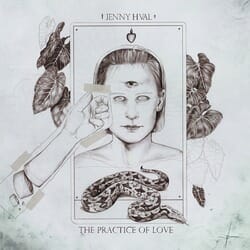 4. Jenny Hval: The Practice of Love
4. Jenny Hval: The Practice of Love
Hval recently told The Ringer, “One thing I’m really enjoying about becoming older is just realizing you’re very small and insignificant. And there’s great potential in that.” Hval has built a career out of finding subversion even in life’s commonalities, and on The Practice of Love she forays into uncharted territory (both in genre and thematic content) to find it: She decided to produce an electronic album about love. This is a far cry from albums inspired by Virginia Woolf’s Orlando and Norwegian death metal. ’90s trance synths and trip-hop breakbeats slither through much of the album’s first half, including highlight single “High Alice,” that read as alluring in an unattainable way—it’s like hearing the song just outside your first rave, wondering if you’ve matured enough to truly abandon your inhibition. Her attention to the timeless subject of love is from the rave’s dim-lit corner; Hval has always excelled in specificity, making the album more about the circumstances surrounding love’s existence. The album’s latter half manifests as conversation between Hval and her various, recurring guest artists. On “The Practice of Love,” Vivian Wang reads aloud a diatribe written by Hval on the word “love” to a listener: “I hate “love” in my own language. It contains the entire word “honesty” inside it, which makes it sound religious, protestant, hierarchic, purified.” Layered atop it is a discussion between Hval and Laura Jean about child birth, abortion, and the responsibilities of humans to create life. The song somehow encapsulates all forms of love in one—the beginning, end, and the hidden, biological field that connects all humans. —Austin Jones
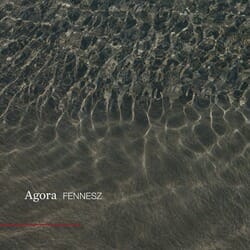 3. Fennesz: Agora
3. Fennesz: Agora
Every moment of Agora’s four tracks is precise, a build-up for a climax that arrives unexpected and earned. Using minimal equipment, the album is isolating and afraid, which is where it truly shines—its lack of courage and its fear of the world unravel into a revelatory narrative of loneliness and quietude. “In My Room,” the first track, has a fascination with the outside world, signaled by a twinkling synth buried deep beneath droning guitar. Once that synth comes to the front, the drone becomes void-like, oppressive—it opens a fissure into an agoraphobic sonic landscape, and leaves us with fearful wonder. The guitar on “Rainfall,” conversely, seems to knock as it vies for attention, trapped in fuzz and columns of impenetrable synth. Its inventive use of its few pieces mark Agora as a masterwork of space, sounding wide as a moon’s crater even when relying on the domestic sounds of TV static. —Austin Jones
 2. Anna Meredith: FIBS
2. Anna Meredith: FIBS
Since the release of music theory savant Anna Meredith’s proof-of-concept debut Varmints, she’s been pretty busy. In 2018, she released Anno, an avant-garde reimagining of Vivaldi’s “The Four Seasons,” contributed to the soundtrack of The Favourite, and scored Bo Burnham’s directorial debut Eighth Grade. In 2019, she was appointed a Member of the Order of the British Empire for her musical service. For all intents and purposes, FIBS is an album by a canonized artist, and it’s only her sophomore LP. FIBS sounds like Caroline Polachek possessed the instruments of a baroque symphony. The album plays with British anxieties and takes maximalism to grander, manic heights, and somehow manages to evoke pop sensibility. “Inhale, Exhale” is the most cloudless globalization-induced panic attack come-down since Joanna Newsom’s “Sapokanikan.” It’s climactic in several ways—Meredith’s digital mockingbird vocality reaches a gasping apex once she notices the whole world’s on fire. FIBS’ quietest track, “moonmoons,” is among the album’s most textural, with sobbing cello transposed over nervous synth. Eventually this track, too, ends in chaos and settling dust. On “Divining,” she intones “I’m hiding my veins.” She must be afraid that her blood will give her away, that even at our most biological we are vulnerable. After all, what is a fib if not a lie we tell to survive? —Austin Jones
 1. Floating Points: Crush
1. Floating Points: Crush
Crush exhales an honest and heartbreaking romanticism. The album contains moments of unbridled rage, sensitivity, haunting malice and complex soul sickness. There’s a thoroughfare of melody that binds these feelings together where they might otherwise feel disparate or at odds with one another—it’s a full-blown evolution for Crush’s ultimate humanity. It sounds like Sam Shepherd took some tips from fellow London producer Kieran Hebden (AKA Four Tet). In contrast to Shepherd’s previous meticulous, hammer-and-chisel works, Crush lives in the moment. There’s a progression throughout the album that mirrors a hero’s journey, a call to adventure punctuated by war of mythopoeic proportions between each track’s moving parts. Crush is always moving forward, looking ahead to its next challenge: the drama of “Requiem for CS70 and Strings” is reminiscent of a funeral march, yet its sonorous analog tones make it uniquely sterile and fractured. Later, “Bias” begins with a deep, tentative beat as if faltering at the precipice of defeat, then surges with a breakbeat so grounding as if our hero is gritting teeth teeth in renewed determination. “Environments” features cooing hazy synths that beckon their listener to interact firsthand with the divine. Despite all its anger, hidden within Crush’s fury are moments of intense beauty. “Birth” is tearfully joyous. The expectant keys seem to herald a shared and precious moment. I can’t claim to know how this story ends for the character lost in Crush—all I know is it ends with splendor so raw that it can only signal a return to nature, whether that be through death or new life. —Austin Jones
Listen to our Best Electronic Releases of 2019 playlist on Spotify right here.







































